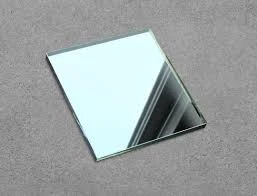

Types of Reflective Glass An Overview
Reflective glass has become increasingly popular in modern architecture and interior design. Its unique ability to reflect light while allowing natural illumination makes it a desirable choice for builders and designers alike. Reflective glass is often used in commercial buildings, skyscrapers, and even residential homes. This article will explore the different types of reflective glass, each offering distinct benefits and applications.
1. Mirrored Glass
Mirrored glass, often referred to as one-way glass or two-way glass, is a highly reflective surface that allows for maximum privacy while still permitting light to pass through. This type of glass is a popular choice for buildings where visual contact is undesirable, such as offices, conference rooms, and bathrooms. Its reflective qualities not only enhance privacy but also contribute to energy efficiency by reducing the need for artificial lighting during the day.
2. Low-E Glass
Low-emissivity (Low-E) glass is another significant category of reflective glass. This glass is coated with a thin layer of metal that reflects heat while allowing visible light to pass through. Low-E glass is particularly effective in controlling indoor temperatures by minimizing heat loss in colder months and reducing heat gain during warm weather. This makes it an excellent choice for energy-efficient buildings looking to decrease their heating and cooling expenses.
3. Solar Control Glass

Solar control glass is designed explicitly to reflect solar radiation. This type of glass reflects a significant portion of the sun's rays, helping to maintain comfortable indoor temperatures and reduce glare. It is particularly suitable for large commercial buildings with expansive glass facades, where heat buildup can lead to excessive reliance on air conditioning. Solar control glass not only enhances occupant comfort but also contributes to the building's overall energy efficiency.
4. Tinted Glass
Tinted glass is created by adding dye during the manufacturing process to produce a variety of shades. While it may not be as reflective as mirrored or solar control glass, it does provide some level of glare reduction and heat absorption. Tinted glass is commonly used in residential settings as well as commercial spaces where a softer natural light is desired. Additionally, it can help in achieving a specific aesthetic, complementing the overall design of the building.
5. Fritted Glass
Fritted glass features a ceramic paint that is baked into the surface, allowing for various patterns and textures. This glass can be both reflective and decorative, serving dual purposes in architecture. Fritted glass is often used as a means of reducing solar heat gain and glare while providing unique design elements that enhance a building's overall appearance.
Conclusion
Reflective glass encompasses a variety of types, each offering unique characteristics and advantages. Understanding the different categories, such as mirrored glass, Low-E glass, solar control glass, tinted glass, and fritted glass, is essential for anyone involved in construction or design. Choosing the appropriate type of reflective glass can greatly impact not only the aesthetic appeal of a building but also its energy efficiency and comfort for occupants. As technology advances, we can expect even more innovative options in the realm of reflective glass, contributing to more sustainable and visually pleasing architectural designs.